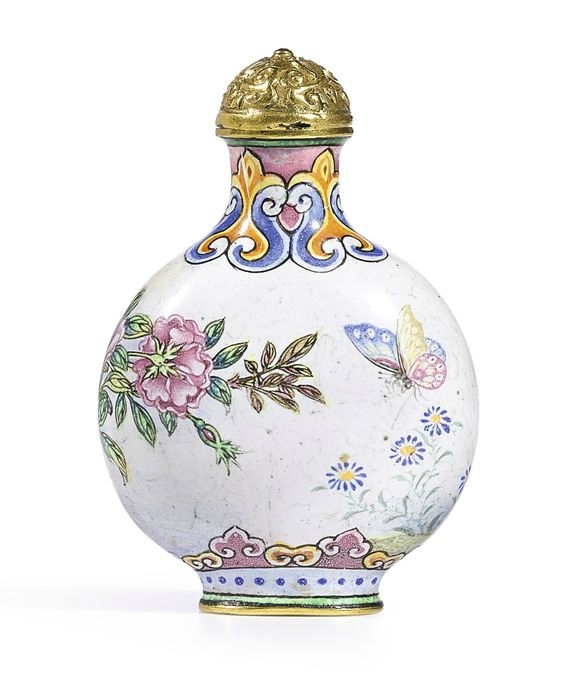Chinese snuff bottles PKR Antique
Many materials were worked and produced in the Imperial Workshop to produce snuff bottles.
Most common are blown and carved glass in addition to molded and enameled porcelain.
It was an enameled porcelain snuff bottle that in June 2015 sold in excess of $7 Million HK dollars or just over $1 Million US dollars.
The snuff bottle is an alliance of craftsmanship and artistry that unfolded in ancient China and Mongolia. Despite a practical objective in mind, these functional items quite often showcase detailed and elegant designs that artfully demonstrate their cultural origin.
Snuff’s initial arrival in China is a topic of debate. Some historians and historical records show that members of China’s imperial families and social elite were made acquainted with snuff by European missionaries and merchants. The emergence purportedly occurred during the Ming Dynasty however alternative reports say that snuff made its way to China via Japan.
The popularity of snuff (finely ground tobacco leaves and combined with herbs and spices) grew swiftly in China during the Qing Dynasty (1644-1911). The energizing and tranquilizing effects of snuff, as well as its ability to remedy aches and pains, colds, and digestive complications encouraged efforts to create snuff receptacles. Chinese and Mongolian artisans began producing the miniature bottles, with a cork secured to the cover to make sure that the snuff remained fresh.
During the middle of the Qing Dynasty, snuff and snuff bottles were used throughout China and into almost every facet of the community. The bottles were treasured not only as a means for carrying and accessing snuff anywhere but also for their artistry and decorative appeal.
While the earliest variety of snuff bottles were made from a variety of materials, glass and adaptations of glass with ornamental features were by far the most popular. During this dynasty, snuff bottles were produced mainly in six regions: Guangzhou, Beijing, Boshan, Inner Mongolia, Liaoning Province, and Tibet.
PKR antiques specialize in identifying and dealing in Chinese snuff bottles. Able to distinguish a 18th Century Qianlong period bottle from the Imperial Workshop. With over a decade buying and selling fine Chinese snuff bottles PKR Antique are able to place the bottle within the spectrum of $10-10,000.
Trade
Chinese trade with the outside world was embraced with gusto during the Ming dynasty, pre-dating the later Qing dynasty anti-trade policy culminating in the “Opium wars”.
The measurable start of a booming China trade starting in the 16th century – with the Chinese influencing and being influenced by the “silk road” and primarily Persian Decorative art.
Later in the Ming and early Qing the European & American market dominated demand, requesting subjects such as Cornelius Plonk plates and Armorial dinner services.
It was almost a social society failure not to have Chinese service with family crest commission if aiming above middle class in the US during the 18th century.
